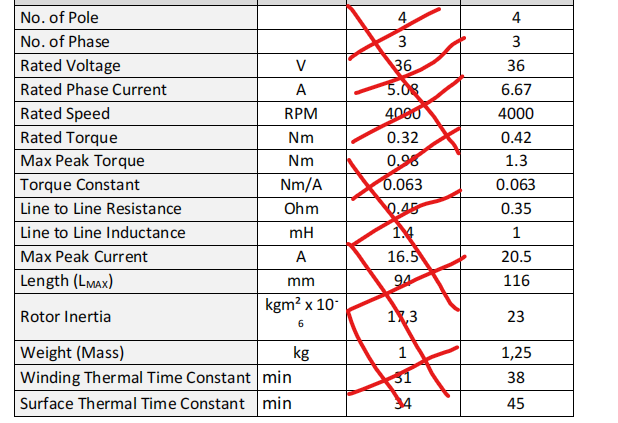I have a BLDC motor with these info (please don't pay attention to the striped column):

How from these info, how can I get the Back-emf constant ? Is it just 36V/4krpm = 9 V/krpm ?
Thank you a lot.
I have a BLDC motor with these info (please don't pay attention to the striped column):

How from these info, how can I get the Back-emf constant ? Is it just 36V/4krpm = 9 V/krpm ?
Thank you a lot.
For an ideal synchronous AC motor (including so-called "brushless DC motors"), the voltage constant is equal to the torque constant. Real motors, of course, are not ideal, but this is still a good enough approximation for most uses.
So for this one, the voltage constant is 0.063 N·m/A = 0.063 V·s = 6.6 V/krpm.